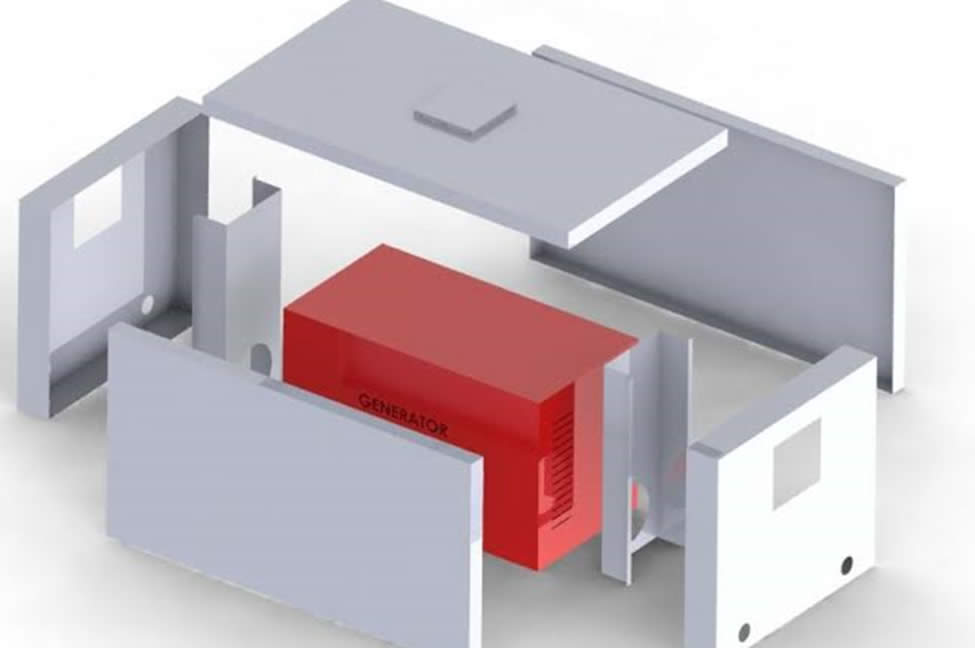Depending on where you live and what you do, you may or may not have come across a generator, the kind we are referring to here. For those who have, we know how noisy and uncomfortable some of them can be. Sadly, in most cases we are forced to endure this noise and discomfort because of the service it is providing us.
In this article, we shall try to show you how you may be able to reduce the noise level and by implication the level of discomfort these machines can pose to you and your family or friends.
What is a Generator?
To start from the very beginning, when we talk about generators, we are referring to a machine designed to generate electric power in certain circumstances where there is an absence or failure of power supply delivered through the main power lines. You can learn more about these machines here.
These electric generators can serve as emergency power supply sources during blackouts, storms, and other such circumstances. They can also act as power supply in areas where there is absolutely no alternative power supply. We are referring to areas like camp sites and other remote locations.
How to Reduce the Noise from a Generator

Like we mentioned above, as a result of how this machine works, it generates a sound that can be disturbing. The volume of the sound will be dependent on a number of factors including the type of generator we are referring to, its power and whether or not it is an already sound-proofed one.
In the event that what you have is not a sound-proofed one, you will be at the receiving end of the full blast of its noise emission. Thankfully, there is something you can do about it.
Getting Started
There are a few things you will need for this project. While there are different possible ways of going about this, we shall focus one which involves providing a form of sound-proofed box for the machine.
You will need the following items:
- Medium Density Fiberboard commonly known as MDF. This is what you will use to construct the box.
- Mass Loaded Vinyl for wrapping around the MDF, providing addition absorption and isolation.
- Foam mats to provide enhanced absorption and isolation inside the box.
- Glue or any other suitable filler for sealing any gaps along the box’s connection points.
- Ventilation ducts which will provide passage to the fumes that the generator will release as it works and also allow air get in to cool it so as to prevent overheating.
- A shock absorbing platform or rubber legs to absorb the vibration of the machine, thereby reducing the noise by some decibels.
Before you begin to put all of these together, understand that you will never achieve complete noise isolation. You will only reduce the noise. You must also ensure that you provide enough vents to ensure it doesn’t begin to overheat as it works.
Using the MDF, construct a box with enough room to comfortably accommodate the electric generator. Using the glue or filler, fill all the points where the board meets to ensure there is no gap. You can then carefully wrap the box around with the vinyl.
The foam mats can be used to layer the box inside so as to further dampen the sound from the generator.
Before placing the generator in the box, ensure you have a shock absorbing base or rubber legs on which you will place it. This will ensure that the noise from its vibration will be reduced. If you can, create an opening from which you will directly channel the exhaust pipe so that the fumes will be expelled directly outside.
You can check out an example enclosure here: https://www.youtube.com/watch?v=DH4L1rTral4.
Other Options to Consider
The method we described above is ideal for more permanent locations. While you can also create a mobile isolation box that you can carry around, you may want to consider other approaches to see if any will be more adequate for your needs.
Generator Location
This can be a simple solution in a number of cases. By simply positioning the machine pretty far from you and running a suitably long cable from it to your location, you can distance yourself from the noise. Of course this will not be possible in every situation.
Size and Power
The size and power of the generator of your choosing will in most cases contribute to how much noise it will make. Going for smaller ones may impact on the noise. Ensure you pick something that is right for your need and not something that is too powerful and possibly very noisy.
Pre-sound-proofed Models
There are a number of these machines that come already sound-proofed. While these may cost more than the open ones, it may be an option worth considering.












